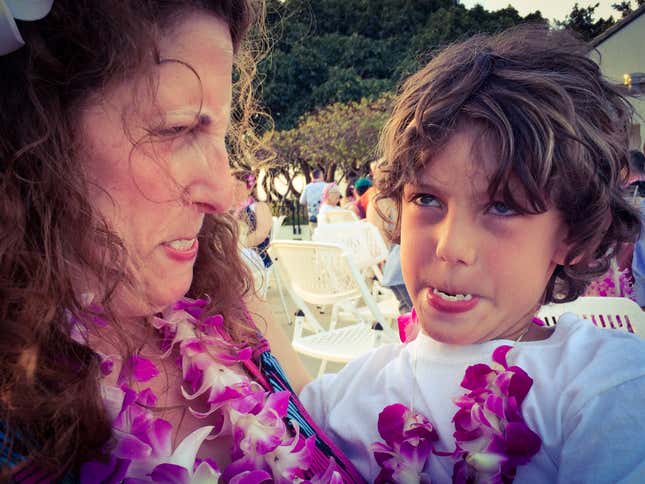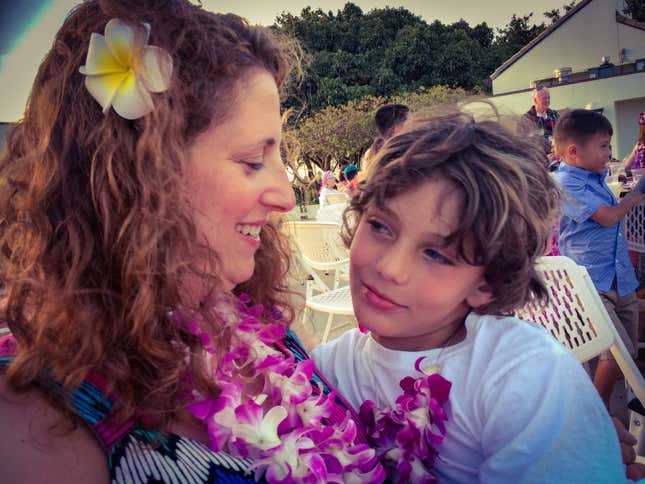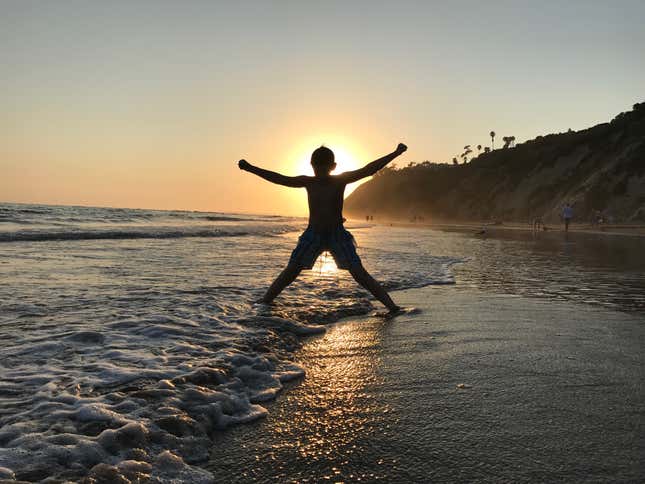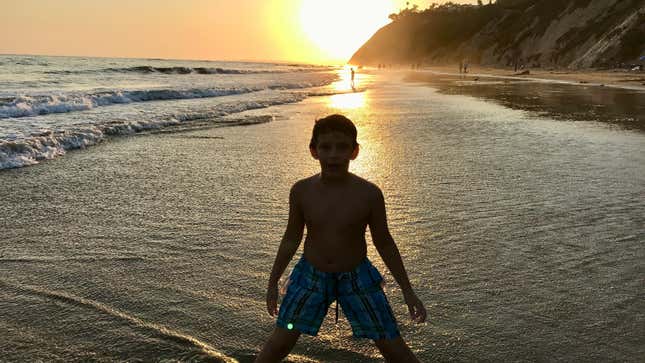Most people don’t use their phone cameras to try to our express artistic visions; we just want cool pics of our vacations and family get-togethers. But most people’s casual, candid photographs are pretty bad. Luckily, it’s easy to up your snapshot game—it doesn’t take a serious study of the art of photography to markedly improve as a photographer. You can make even the most basic photographs more interesting and memorable by following a few almost-no-effort steps.
Make sure someone is in the photograph
Table of Contents
This is the first, most important rule of casual or vacation photography: We like to look at pictures with people in them.
Vacationers tend to take pics of interesting things—landscapes, monuments, etc.—but they don’t result in interesting photographs. A picture of the Eiffel Tower or a beautiful sunset is dull because it doesn’t tell a story, but photographs of “Clark drinking wine with the Eiffel Tower behind him” or “Brayden standing in front of the Christmas tree” inherently tell stories.
Even if you’re traveling solo, a selfie style shot with the thing of interest in the background is almost always better than just the thing.
You probably need to step closer
Most amateur photographs can be improved by the photographer taking a step toward the subject. Too much negative space in a photo makes it feel cold, where getting up close is more likely to result in a “you are there with me” feeling for the a viewer. So fill up the frame.
How to capture more natural expressions
If you’ve ever wondered why people often look staid or lifeless in photographs, it’s likely because the “smile” they have been commanded to deliver is a forced facial expression. Or they’re posing in an unnatural way they only think makes them look better. It’s someone smiling with their mouth, not their whole face. But if you snap someone legitimately smiling, the happiness radiates from them, creating a more natural, interesting image. Same with having a real expression on their face instead of rigid pose.
Here’s my personal secret to getting photographs of legitimate smiles: Instead of saying “say cheese!” or something, I say, “OK, I want you to look totally sad, like this is the most depressing vacation ever,” or “look like you’re really angry at each other.” This will result in hilarious photographs of your sad, angry family on vacation, but more importantly, they will inevitably crack up after you take the picture, letting you capture a second image of people having unguarded fun. For example: My family in Hawaii:
Angry:

Happy:

Pay attention to the light source
“Those pictures are backlit,” you might be saying, and you’re right. They might be better photos if the sunlight was in front of my subjects so their features were illuminated, instead of behind them making them darker—but that’s where we were seated.
Be aware of the light when taking a photo, but don’t let it stop you: You can still take nice, casual snaps if you’re not doing everything “perfectly,” and capturing a casual moment is easier if you’re not rearranging everyone so much that you become an annoyance. You can use backlighting to your advantage to take cool silhouette style photos too, as you can see below.
The lines behind your subject

When taking a photograph, look behind your subject. Try to find lines in the background—whether from the walls and ceiling or the horizon and the ground—and try to place your subject where the lines intersect. See the photo above for an example. The viewers’ eyes subconsciously follow the lines of the sea and sky, and they “lead” to the subject of the photo. Here’s what it looks like if you don’t bother:

Just crouching down to get out of eye-level and using the natural lines to point to the subject really makes a difference.
Take a lot of pictures
You don’t have to pay for film or developing anymore, so you’re free to take as many photographs as you like. Use the “boost” mode if your phone has one. Move around. Try different angles. Experiment. Ignore every rule you’re trying to follow. You can discard the bad pictures later and save only the good ones.
Go beyond “eye-level”
Most amateur photographs are taken from eye-level because you’re holding the camera there, but try raising or lowering the angle to add interest and get different effects.
Composition: The center and the rule of thirds
If you’re putting the subject of your photographs in the middle of the frame, you’re doing better than most. But if you want to make things a little more interesting, use the rule of thirds. Think of the picture as divided evenly in thirds, both vertically and horizontally. Then photograph your subject at the juncture point between the lines. Phone cameras often have a grid built in to the “viewfinder” that makes this easy. Don’t sweat it if you’re off. You can crop it later (more on that below) and often put your subject where they need to be.
Cropping and correcting
Smartphones make cropping and color-correction ridiculously easy, and you don’t have to know what you’re doing. The iPhone’s in-camera “magic wand” tool will auto-correct your photos and almost always make them better than they were before, and you can crop your pictures easily too. This lets you play around with composition, move in closer on subjects, and otherwise fix up your sloppiness.
If you decide to get more serious about photography, there are any number of tools to “fix it in post,” but for casual snaps on vacation, just these two no-effort tools will up your game noticeably.
